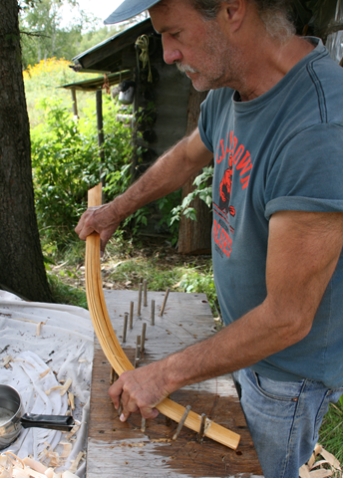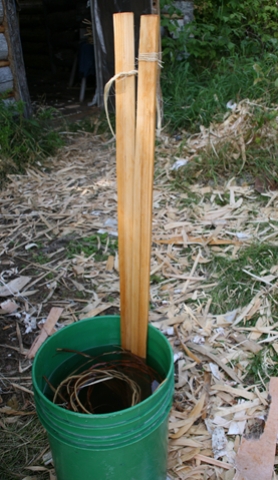 |
These are the two pieces of cedar that have been
carved into the basic form from which the stempieces will be made. They
are soaking in water to facilitate them being bent into the desired shape. |
|
Tom used his crooked knife to make 7 longitudinal
splits most of the way down each piece. This will facilitate them
being bent without cracking or stress that might weaken them. |
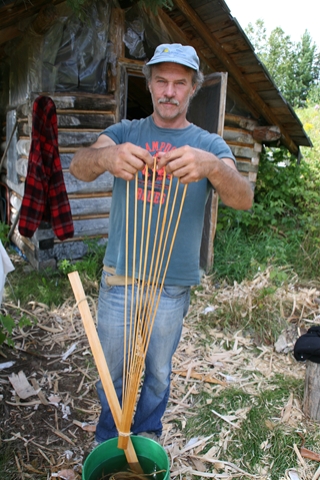 |
| |
|
|
|
|
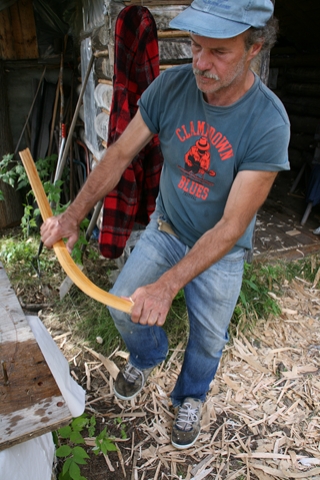 |
The shaping of the wet piece begins by just
bending it against the knee. |
|
Tom has laid out the basic form that he wants on a peg-board. He works
towards getting the piece bent to match the pattern. |
|
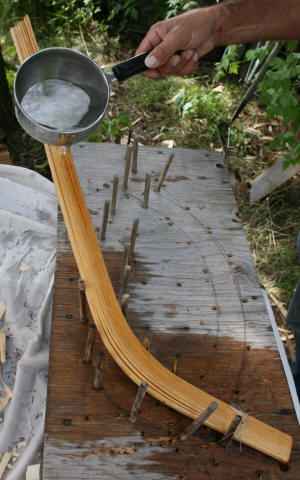 |
If the piece will not bend enough, it is not
forced. Rather, hot/boiling water is poured on it. This makes it
more maleable. |
|
He then bends if further, and repeats the process
until it will fit in the pegboard foarm. |
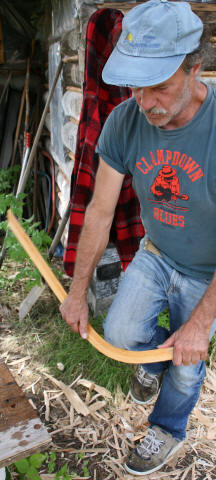 |
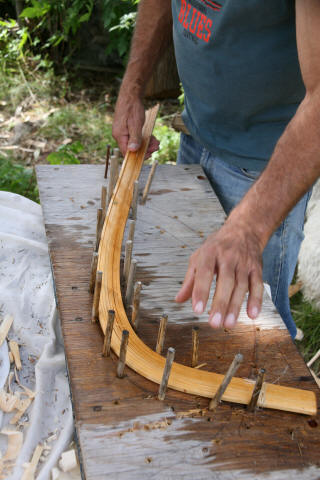 |
The piece is now in the
desired shape. Left dry, while constrained in this shape by the peg-board,
it will hold its shape. Before being fit in the canoe, however, the
laminated parts are lashed in order to increase their structural integrity.
|
|
Here we see that the second stempiece has gone
through the same process. By having both fit to the same peg-board, we
will achieve the symmetry that we want between the bow and the stern. |
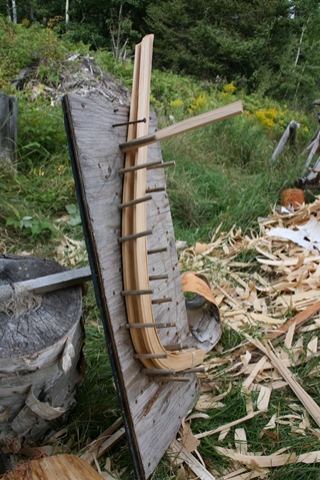 |



